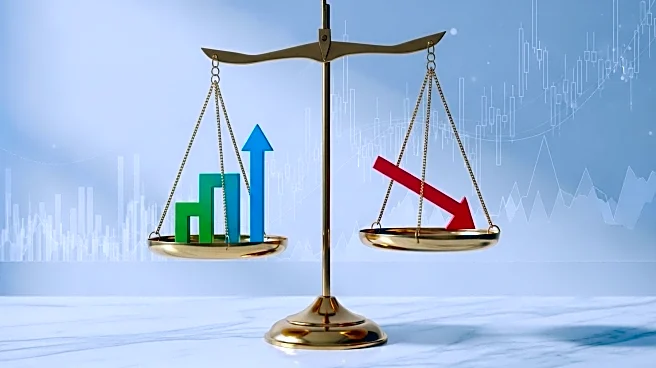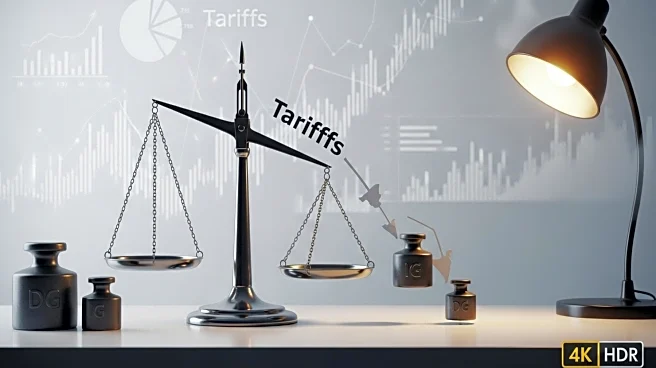What's Happening?
Federal Reserve officials are expected to cut interest rates in response to recent data indicating a weakening labor market and easing inflation concerns. The unemployment rate rose to 4.3% in August, and a revision showed job losses in June. These developments have shifted the Fed's focus from inflation to supporting the job market. Market analysts anticipate a quarter-percentage-point rate cut, although some argue for a larger reduction. The Fed's upcoming meeting will include updated economic projections, which will be closely watched for insights into the central bank's policy direction.
Why It's Important?
The Federal Reserve's response to labor market conditions is critical for the U.S. economy, as it seeks to balance inflation control with employment support. A rate cut could stimulate economic activity, but it also signals concerns about economic stagnation. The Fed's actions will influence financial markets, consumer confidence, and business investment. The central bank's ability to navigate these challenges will be pivotal in shaping economic outcomes, particularly as it faces pressure from President Trump for rate cuts. The Fed's decisions will have far-reaching implications for economic stakeholders and policy directions.
What's Next?
The Federal Reserve's updated economic projections will provide insights into its outlook on inflation, unemployment, and interest rates. These projections will be crucial in understanding the Fed's policy priorities and its approach to managing economic challenges. The central bank's communication will be key in guiding market expectations and shaping economic forecasts. Potential reactions from political leaders, businesses, and financial markets will also be important in determining the broader economic impact of the Fed's decisions.












